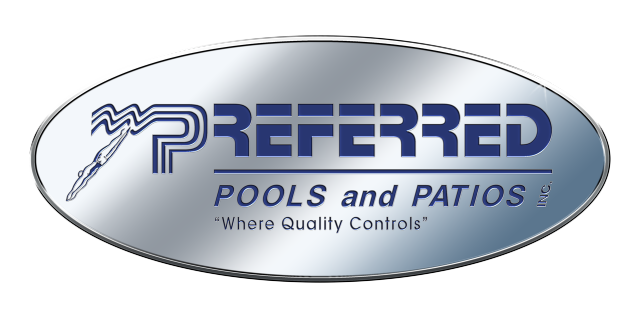30 Years of Hardscaping Experience
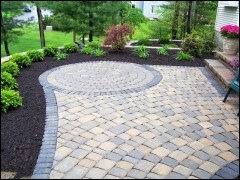
> > For more information on our hardscaping services, commercial pools, architectural fountains, or eco-friendly floating fountains and pool maintenance services, call (813) 247-7665 today.
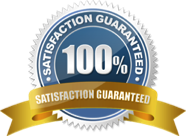
Our 100% Satisfaction Guarantee is for Quality Workmanship.
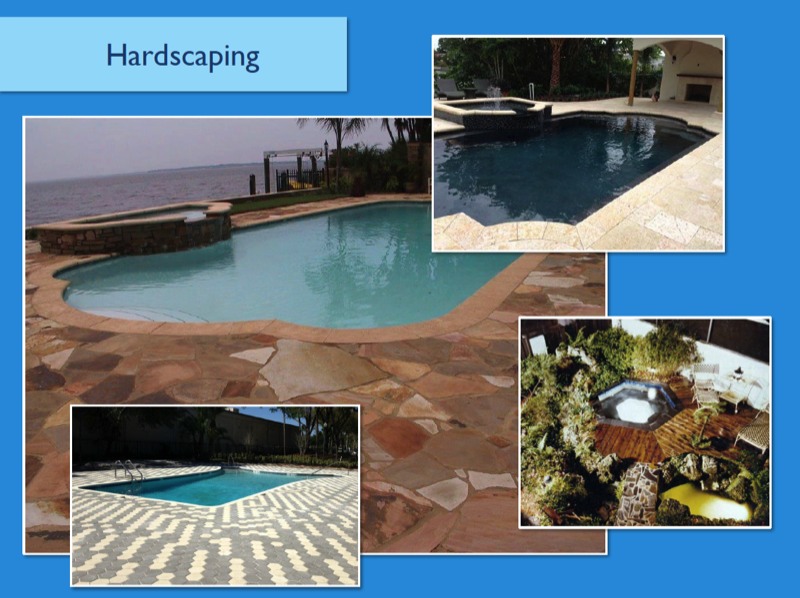

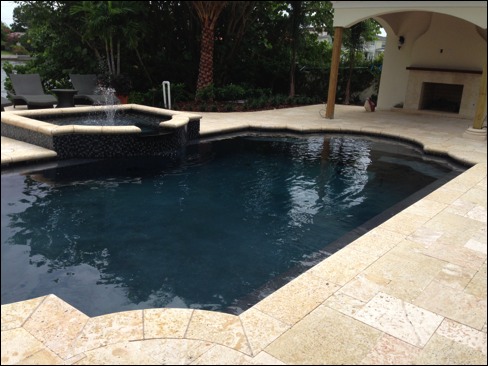

Hardscaping is an attractive feature for pool owners today and offers many appealing options, such as a tumbled travertine border and patio, complete with a fully developed outdoor living room and outdoor kitchen. Once you've made the decision to create a hardscape design for your pool, our company will help you plan your particular hardscaping goals.
In producing your hardscaping concept, it is important to consider the overall landscaping of your property as related to your pool. For example, what are the natural elements that most clearly define your property?
Maybe it’s a beautiful view of the ocean or bay that’s accentuated with a foreground of one of our custom infinity pools. In this case, it would be important to not put down anything too “busy,” which might disrupt or compete with the beautiful view. Or, maybe you have a distinctive row of palm trees on one side of your pool, which is something that would need to be incorporated into your general hardscaping plan.
It’s also important to consider the type of natural stone that you may already be using. In that case, it’s important that the hardscaping material complements the color and texture of your current natural stone.
Drainage
Another important subject to consider is drainage. This is vital, as excess water produced by tropical storms and hurricanes needs to be able to drain efficiently. Preferred Pools and Patios of Tampa can design a drainage plan that will accomplish this requirement, without compromising the aesthetic beauty of your hardscaping plan.
Balance
Another integral part of a successful hardscaping plan is balance. This basically means achieving a good balance between linear design elements and curved design elements. By combining a balance of both, your hardscaping concept will look more natural, as the outdoors itself is a perfect balance of linear and curved elements.
Integrating Elements
Finally, a winning hardscape will also integrate inorganic elements — like concrete, stone, and bricks — with organic elements such as plants and other vegatation. Says Rudy Heiny, president of Preferred Pools and Patios, “Integrating organic with inorganic elements will soften the hard surfaces, and make your entire hardscaping concept much more pleasing to the eye.”
Over 30 years of Experience
For expert advice on your next hardscaping project, call us today at (813) 247-7665.
Interlocking Concrete Pavers &
Permeable Interlocking Concrete Pavers:
Ecological Best Practices
Courtesy of Preferred Pools & Patios, Inc. – Tampa, Florida
By practicing ecological best practices, today’s builders can earn up to 27 LEED® credits using interlocking concrete pavers and permeable interlocking concrete pavers from Preferred Pools & Patios of Tampa.
The proliferation of impervious surfaces over the American landscape and the conveyance of rainwater by way of the urban infrastructure have had serious consequences over the natural hydrological cycle.
A study by the Environmental Protection Agency, “Urbanization and Streams: Studies of Hydrologic Impacts,” shows that increased imperviousness leads to increased flow volumes, peak durations, increased stream temperature, changes in sediment loading, reduction of infiltration to aquifers, and, entrainment of pollutants to receiving waters.
The rising impermeability of surfaces in towns, suburbs, and especially cities, has limited the recharging of soil water reserves, thus drying out the soils from which plant roots draw their nutrients. As is commonly known, dry soils are also more prone to erosion.
Unable to leech down through the surface, rainwater gathers sediments and ground pollutants as they dramatically increase surface runoffs through urban infrastructure, flowing down to receiving waters.
This has affected modern society at the expense of the environment around which we live, as well as economically, raising costs of development and maintenance of infrastructures of all sizes.
To improve sustainable development, U.S. federal law now requires, through the National Pollution Discharge Elimination System (NPDES), states to control non-point source water pollution. Best Management Practices are techniques identified by state authorities to achieve this goal. Regional laws include limitations on the percentage of impervious surface over a total development, restrictions on outflow volume and velocity to the existing infrastructures, outflow contaminant concentrations, and others. Adopting a Best Management Practice is not only encouraged through legislation, but provides promoters, authorities and residents with a great tool to enhance their comfort while ensuring great medium and long term return on investment.
Permeable pavements are one of the most popular Best Management Practices. They answer both qualitative and quantitative needs for precipitation water flows. As water rains on the pavement, it seeps through to the ground, reducing surface flows, often even eliminating the need for sewers and manholes.
To best understand permeable pavements is to perceive the pavement and the base aggregates as a system, instead of separate products. As water rains down on the pavement, it begins its journey by seeping through the pavement, and then through the base aggregates, which naturally filter the pollutants. As it travels down, the water is stored in the base, until it reaches the natural underlying soils and recharges the ground aquifers. Thus, permeable pavement serves as an underground storage basin that filters the water while allowing pedestrian and vehicular traffic on the surface.
Depending on site conditions and owner preferences, permeable pavement can be designed to obtain full, partial or zero exfiltration. Full exfiltration is the most often desired and used application, which sees all the rainwater stored in the base leeching down to the underlying subgrade. When natural soils are not permeable enough, or storms too heavy, perforated pipes are added to alleviate the excess water. Further, an impermeable geo-membrane can be installed above the natural soils to prevent exfiltration of contaminated flows when the pavement is installed in industrial sites.
According to the Interlocking Concrete Pavement Institute (ICPI), “…sustainable development meets the needs of the present without compromising the ability of future generations to meet their needs.”
In the design and construction community throughout North America, a leading means for addressing sustainability or “green building” is through LEED®, or Leadership in Energy and Environmental Design. Organized and developed over a decade ago by the U.S. Green Building Council, a wide range of representatives from the building industry and environmental science, LEED® provides guidelines for reducing energy and wasted resources from building and site design.
According to the ICPI, 27 LEED® points can be obtained, directly or indirectly through the use of permeable pavements. The most obvious credits attainable through the use of permeable pavements are Sustainable Sites 6.1 and Sustainable Sites 6.2, covering imperviousness and pollutant filtration respectively.
Also, through the right choice of permeable pavements, points can be attributed for reduction of heat island effect, reused or recycled materials, regional materials, pavement lifecycle, water efficiency and utility durability plans.
Though the main use of permeable pavements is reduction of storm water flows, it can sure be the main entryway for other technologies, mainly water harvesting. While the infiltrated water isn’t quite potable for consumption, it can be stored for a wide array of uses, ranging from landscape irrigation, root system maintenance, and building graywater applications (e.g., flushes).
Whether Interlocking Concrete Pavers or Permeable Interlocking Concrete Pavers, lightweight pavers make an impressive contribution to a project.
Looking for Ways to Earn Up to 27 LEED® Credits?
Partner with Preferred Pools & Patios, Inc.
Tampa’s Favorite Hardscape Company™
Call Rudy Heiny, Owner at (813) 247-7665
© 2014. Preferred Pools and Patios, Inc.
LEED® is a registered trademark of the U.S. Green Building Council. All Rights Reserved.
Tampa’s Favorite Hardscape Company™ is a trademark of Preferred Pools and Patios, Inc., Tampa, Fla.
Sources: World Commission on Development and the Environment, Interlocking Concrete Paver Institute, and the U.S. Green Building Council. Keywords – leed, leed certified, pavers, hardscape, tampa

Contact us about your hardscaping project.
